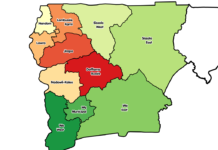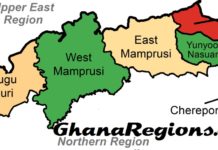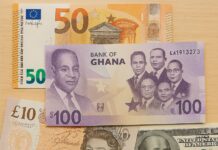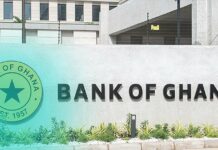
Accra, June 24, 2025 — The Ghanaian cedi has demonstrated signs of relative stability on the interbank foreign exchange market, maintaining its position at GH¢10.30 to a dollar on both June 23 and June 24, 2025, according to data published by the Bank of Ghana (BoG).
This comes amid slight fluctuations in the parallel market, where forex bureaus are quoting significantly higher rates.
Interbank Market Trends: Slight Appreciation in Cedi
On Monday, June 23, the cedi was traded at GHS10.31 per dollar on the official interbank market — a marginal appreciation from last week’s average of GHS10.34. This positive movement, though modest, is reflective of the central bank’s ongoing interventions and policy measures aimed at stabilizing the local currency.
As of June 24, the interbank rate remains relatively unchanged, selling at approximately GHS10.30 to the US dollar, marking the second consecutive day of consistency. Analysts suggest that this level of stability, although fragile, is encouraging in the context of persistent global economic pressures and Ghana’s own macroeconomic challenges.
Parallel Market Divergence: Forex Bureaus Trading Above GHS12.00
Despite the interbank market showing signs of cedi resilience, the parallel (black) market tells a different story. On June 23, forex bureaus in Accra and other commercial centers were selling the dollar at an average of GHS12.25, while buying it at around GHS11.00. This puts the average buying rate at GHS10.34 and the selling rate at GHS11.00, highlighting a widening gap between the official and unofficial exchange rates.
This significant discrepancy is a reflection of ongoing foreign exchange shortages in the retail market, where demand for dollars continues to outstrip supply. Businesses, importers, and individuals who are unable to access the dollar through official channels often turn to forex bureaus, where prices are dictated by market forces rather than regulated rates.
Key Drivers of Exchange Rate Movements
Several factors are contributing to the cedi’s performance:
1. Bank of Ghana Policy Actions
The BoG has continued to implement tight monetary policies to curb inflation and stabilize the currency. Interventions in the forex market, including occasional dollar sales to commercial banks and forex bureaus, have helped provide short-term relief.
2. Inflows from IMF and Donor Support
Ghana’s ongoing program with the International Monetary Fund (IMF) has helped boost investor confidence, with the country receiving the third tranche of its $3 billion Extended Credit Facility (ECF) support in early June. These funds have bolstered the country’s reserves, easing some pressure on the cedi.
3. Export Earnings
Increased revenue from gold, cocoa, and oil exports has marginally improved the current account balance. However, price volatility in international commodity markets continues to pose a risk.
4. Import Demand and Domestic Inflation
High import dependency and persistent inflation — currently hovering above 24% — continue to erode consumer and investor confidence. These conditions exert sustained pressure on the cedi, especially in the informal FX market.
Market Sentiment and Outlook
While the interbank rate suggests that the cedi is stabilizing around the GHS10.30 mark, the sharp contrast with forex bureau rates underscores underlying volatility. The persistence of a dual exchange rate regime — with BoG offering one rate and the retail market reflecting another — raises concerns about transparency, speculative activity, and access to foreign exchange.
According to GhanaRegions.com, currency analysts at some leading financial institutions in Accra, the cedi’s trajectory over the next few weeks will depend largely on the following:
- The BoG’s capacity to continue supporting the currency with adequate reserves.
- Effective implementation of structural reforms under the IMF program.
- The performance of global markets and commodity prices.
- Domestic inflation and fiscal discipline.
As of June 24, 2025, the Ghanaian cedi remains relatively stable at GHS10.30 per dollar on the interbank market, signaling a mild recovery and central bank control. However, the stark difference between official and parallel market rates, with forex bureaus quoting as high as GHS12.25, reflects underlying demand-side pressures and inefficiencies in FX supply distribution.
Ghana’s monetary authorities will need to maintain strong macroeconomic management, policy discipline, and transparent communication to build investor confidence and reduce the volatility that fuels speculative trading in the retail FX market. While the immediate outlook is cautiously optimistic, sustained gains will depend on broader economic resilience and global economic headwinds.

















































![Morocco knock out Spain on 3-0 penalties to reach FIFA World Cup 2022 quarter-final, Morocco vs Spain (0-0) (3-0) [Video]. Morocco knock out Spain on 3-0 penalties](https://ghanaregions.com/wp-content/uploads/2022/12/Watch-Morocco-vs-Spain-0-0-and-3-0-penalties-218x150.jpg)


































